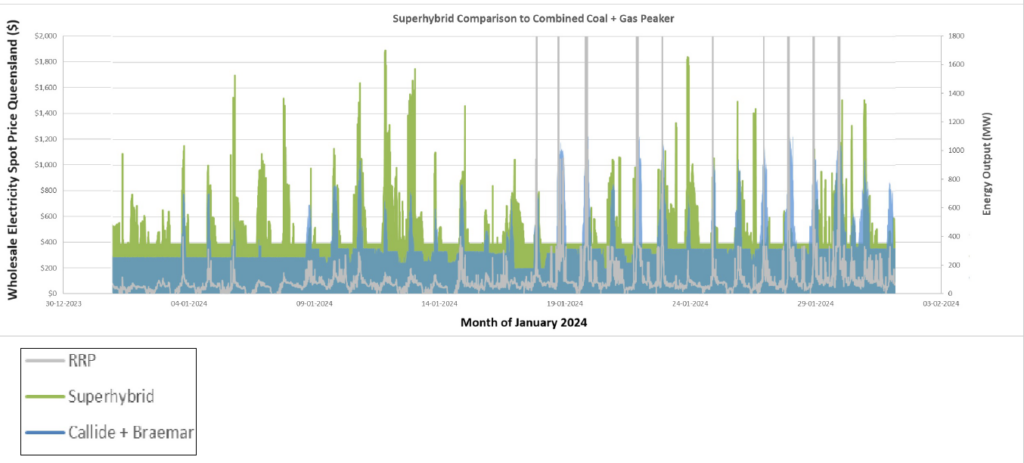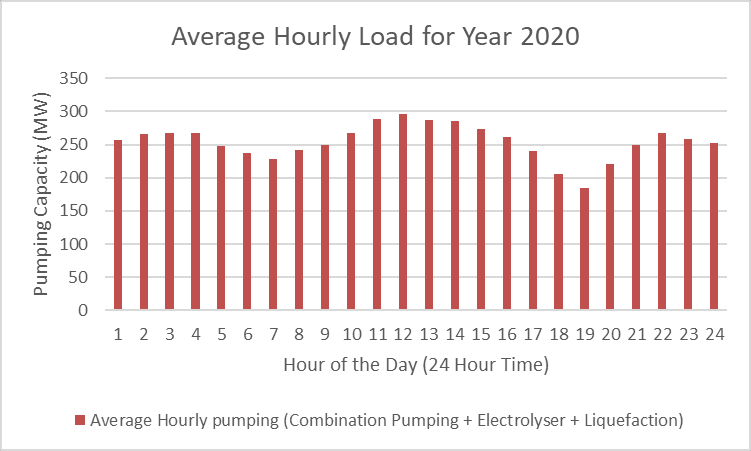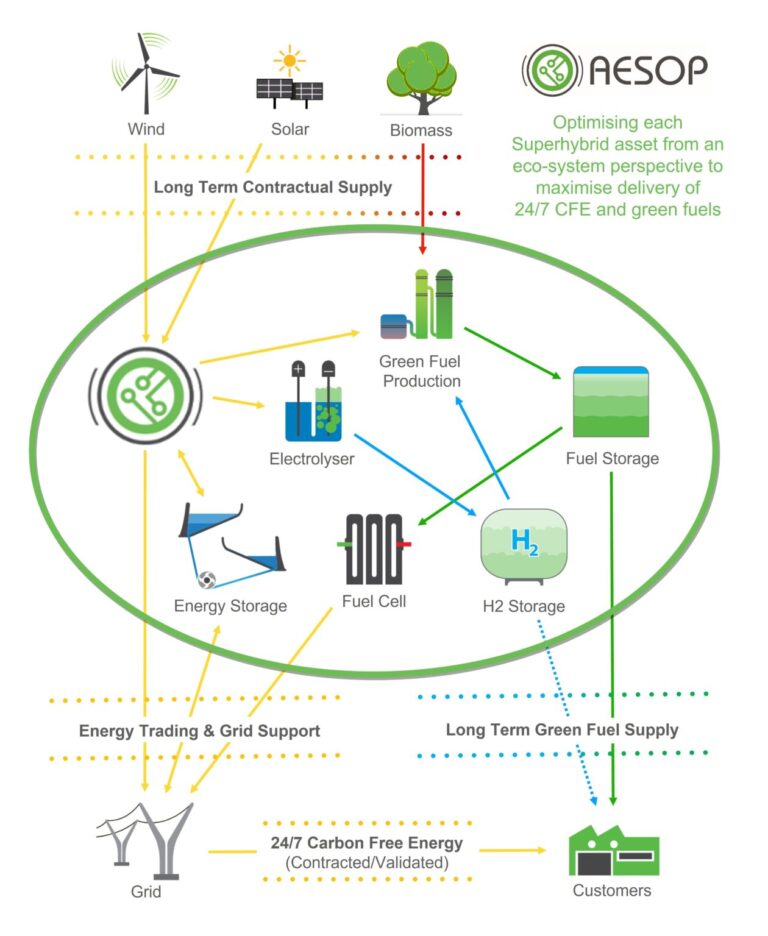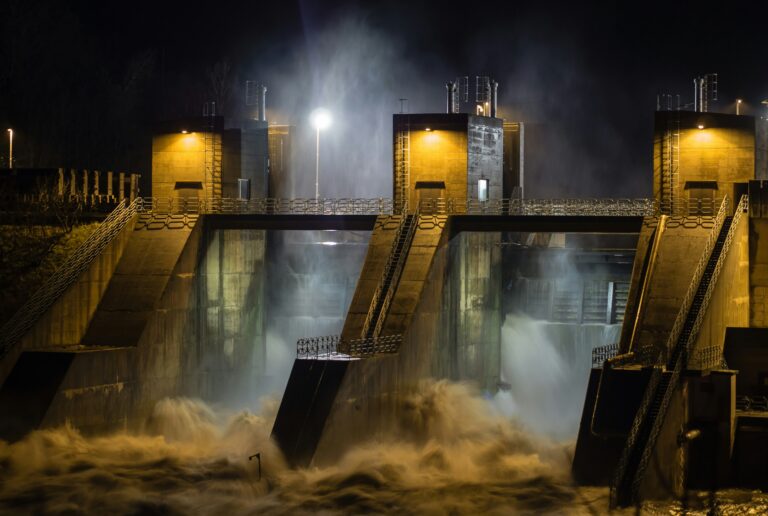Chris Baker, Virpi Barrett
It’s been fascinating to observe energy-hungry US data centres taking such an interest in nuclear solutions. Whether their suggestion is to build anew or recommission old nuclear power stations, it’s clear their primary goal is carbon-free baseload energy. For us as a developer of 24/7 carbon-free energy (24/7 CFE) this is encouraging.
The nuclear debate here in Australia lacks fair comparison to other competing technologies. It includes figures that are not applicable in the Australian context and omissions, including fair comparisons with alternative technologies. To address some of these issues, Sunshine Hydro developed the following submission to the ‘Inquiry into nuclear power generation in Australia’. We were pleased to present our position at one of the live hearings and to be quoted in the Courier Mail last weekend.
Below is our full submission to the House Select Committee. Read on for an apples-to-apples comparison of five key considerations related to generating reliable and affordable 24/7 CFE on a large scale.
14 November 2024
The House Select Committee on Nuclear Energy
Parliament House
Canberra ACT 2600
nuclear.reps@aph.gov.au
Submission: Inquiry into nuclear power generation in Australia
The Hon Mr Dan Repacholi MP and the Committee,
Sunshine Hydro is a developer of 24/7 carbon-free energy and appreciates the opportunity to submit on the Inquiry into nuclear power generation in Australia. Our submission comes from a technology agnostic viewpoint, and it addresses the key objectives of the proposed nuclear power solution: affordable and reliable 24/7 carbon-free energy on scale.
We would like to bring to your attention the results of the research we have been doing in relation to the creation of what is commonly called base load power. When it is provided by zero emissions resources, such as would be created by a nuclear power station, it is also known by the term 24/7 carbon-free electricity.
We believe that the findings of our R&D offer important considerations, including some that are not publicly or politically well known, but that are relevant when forming a recommendation related to the nuclear power solution in Australia. We believe that it is necessary for the committee and the wider community to be aware of all alternative solutions on the table and to understand the implications of each.
Research objective and outcome
Our research objective is to turn variable energy into reliable 24/7 carbon free energy, delivered consistently in all weather conditions, every hour of every day. The outcome must be hour by hour matched to carbon-free sources, to resemble the current end-goal of energy systems worldwide: a fully decarbonised grid. And as a project developer, we need the solution to be financially viable and technically mature.
The optimal solution proposed by our R&D is an asset ecosystem (we call it Superhybrid) that turns variable renewable energy into a baseload type (24/7) carbon-free electricity and produces green transportation fuels as an alternative for curtailing excess renewable generation. It also provides peaking capacity into the electricity markets and strengthens the grid with frequency and voltage support.
The output of this system resembles the combined output of a coal-fired power plant and a gas-fired peaking power plant. This can be visually observed from the following chart, that shows the simulated output from one of the projects under development into the Qld electricity grid in January 2024.
The chart shows the output that would be delivered from a Superhybrid in green. The blue area is the output of Callide B Unit 1 steam turbine plus the output of Braemar gas peaking generator. Grey line is the market price at the time. Callide B Unit 1 is 350 MW, which is similar in output to a Small Modular Reactor such as BWRX-300. As can be seen from this chart, the output from this totally renewable system provides a flat profile like a baseload power station with the additional capability of peaking power, similar to a gas turbine.

Chart 1. The data is from a digital twin running in real time, exactly the way our Djandori Gung-i project in Miriam Vale Qld would operate if it was on ground today. It uses real price, wind and solar data and forecasts available at the time of decision making for each 5-minute period. The project development is currently on planning and approvals phase with commissioning date in 2031.
The main technologies involved are wind and solar energy coming in, and long duration energy storage such as pumped hydro or flow battery. Assisting technologies, a flexible load and a small methanol-fuelled peak generator, are needed to ensure 98% supply reliability and that energy is never wasted. The innovation of the Superhybrid is in the way the different assets support each other and the optimisation software that instructs the optimal operation.
In this submission we draw comparisons between these two technologies under five key considerations when assessing the suitability and competitiveness of nuclear energy in the Australian energy market:
- the reliability of delivery of around clock carbon free power
- the timeframe for deployment
- the cost of generated 24/7 carbon-free energy
- the ability to respond to oversupply situations
- the ability to respond to peak demand
1. The reliability of delivery of around clock carbon free power
The forced outage rate of nuclear power stations in the USA from 2000 to 2015 was generally between 1 and 2% 1. In other words, their reliability is generally better than 98%. Every 12 to 18 months a nuclear station has to shut down completely for refuelling, bringing the overall availability to about 90-95% 2.
Our research and modelling shows, that a Superhybrid can provide 24/7 carbon free energy continuously with a reliability of greater than 98%. Additionally, Superhybrid is typically able to provide unmatched (i.e. not necessarily green) power sourced from the grid previously to fill the gaps. We have tested the model against historical data, live data feeds and simulated future scenarios and in all cases, it can be done with very high reliability, similar to a nuclear power station. The asset combination includes some modularity and flexibility, giving a degree of redundancy to schedule individual maintenance outages, meaning that the technical availability is expected to be nearly 100%, with a caveat for ‘force majeure’, like major transmission line faults.
CONCLUSION: There is a decarbonisation solution, that offers the same or better reliability than nuclear power
2. The timeframe for deployment
Nuclear power stations as proposed by the LNP are to be located at the sites of existing coal power stations. This makes use of existing transmission lines.
There are many proposed pumped hydro stations in Australia, particularly in NSW and Queensland, that are being developed by various companies (including Sunshine Hydro). These are typically located quite close to existing transmission lines and each of these can potentially be configured to be the core asset of a Superhybrid.
Permitting and legislative hurdles related to nuclear power haves been widely discussed in the context of establishing a new nuclear power sector in Australia. It is likely to take at least 15 years for the first plant to be operational, after which the others could follow every few years 3. The length of the process and the various layers and successive steps of the regulatory pathway increases the risks of delays, particularly in the lack of bipartisan support.
The pumped hydro stations could be operational within a 5-10-year time frame and developed in parallel with each other. The various projects could each produce a 24/7 carbon-free baseload in the range from 150 to 1400 MW which is similar to the range offered by nuclear power stations. There is also a faster approval pathway for Superhybrid projects utilising a flow battery instead of pumped hydro, which is fast becoming competitively priced.
CONCLUSION: There is a decarbonisation solution, that can be developed in scale much faster than nuclear power and without change in legislation
3. The cost of generated 24/7 carbon-free energy
The price of the nuclear power is under a lot of debate. This is due to confusion between indications of cheap power from old nuclear power stations that were heavily subsidised with tax-payer money several decades ago. The marginal cost of such plant is low. However, the indications for newly built large nuclear power stations are much higher $155-252/MWh, and for SMRs about 2.5 times more expensive 4. Generally, these prices do not include any significant contribution towards safely storing the radioactive waste for 100,000 years after the closure of the plant, but a handful of governments globally have started preparing for this liability.
Our research and modelling indicate a price point that is well below these price ranges.
There is a proposal that nuclear power stations would be owned and operated by the federal government. However, there is an alternative approach, that would open the market to other participants that can produce 24/7 CFE. There are examples of governments such as the ACT, Victoria and NSW that have enabled new generation by offering contracts for difference (CFD) for generators that produce variable renewable energy. A similar CFD approach could be used to stimulate development of carbon-free baseload power.
For example, the government could seek a flat 300 MW baseload profile of carbon free energy. Nuclear proponents could bid into this auction just as other participants, such as bioenergy generators, hydro plants and Superhybrids.
This approach would demonstrate the commercial viability of nuclear as it could compete on a level playing field for the provision of energy. It would also de-risk taxpayers’ dollars by focusing on buying the product rather than building the power stations.
CONCLUSION: There is a decarbonisation solution, that is cheaper than new nuclear and a method for the government to stimulate the development without bearing the capital cost of the asset.
4. The ability to respond to oversupply situations
Nuclear reactors can’t be turned off, but many of them can ramp down to about 15% to 50% of the full generation capacity. However, this may take an hour or two and it comes with a cost due to lower utilisation rate if such flexibility is used daily 5. Therefore, nuclear power plant is likely to be generating with substantial capacity even on mild sunny days when solar could provide more energy than needed. Solar generators, particularly rooftop solar, that Australian households have invested in, will have to be turned off to make room for nuclear power in the grid.
The nature of a Superhybrid is that it can provide enormous flexible loads by pumping water into the hydro reservoir and by producing hydrogen. This means that residents with rooftop solar and solar farms will be able to keep exporting energy and not be curtailed so often.

The chart above shows an indication of the average load provided by the Superhybrid during the different hours of the day in 2020. Provision of this substantial load helps avoid spilling of wind and solar energy.
CONCLUSION: There is a decarbonisation solution, that reduces the need to curtail renewable generation by soaking up the excess, rather than worsening the oversupply situations, like nuclear power does.
5. The ability to respond to peak demand
As described in the previous chapter, it’s the nature of nuclear power to generate on full capacity. Therefore, there is no room to respond to evening peaks or heatwaves that increase the demand in the grid.
Superhybrid, however, is equipped to ramp up generation well beyond the baseload supply, like demonstrated in the chart at the beginning of this submission: the Superhybrid would have been routinely able to provide peaking power in the order of 2-3 times the baseload supply capacity.
CONCLUSION: There is a decarbonisation solution, that can respond to peak demand as well as providing similar baseload as nuclear power does.
Summary
In our submission we have demonstrated how a Superhybrid ecosystem of assets, namely long-duration energy storage, electrolysers, green fuel production facilities and a peak generator using green fuels can provide a solution to manage our future electricity grid with a high level of variable renewable energy. It operates in at the same scale as nuclear power plants, but in comparison to nuclear power, this solution:
- It has a similar reliability with less annual maintenance downtime
- is quicker to deploy, without regulatory hurdles
- generates 24/7 CFE (carbon-free energy) at a lower cost to consumers without the need for public capital expenditure
- reduces the need to turn off rooftop solar and curtail solar farms
- additionally provides peaking power like a gas fired peak generator
We know Australians are up for this discussion and we believe all types of zero-emissions technology should be considered as part of a balanced energy mix.
We hope that sharing our research conclusions and an alternative solution is helpful for the committee in the important work of formulating a recommendation on the optimal path towards a fully decarbonised electricity grid.
We are available to answer any further questions that this submission may raise both in the Brisbane hearing on the 15th November as well as afterwards.
Yours sincerely,
Chris Baker
Director and Chief Technology Officer
Sunshine Hydro
Footnotes:
- https://www.statista.com/statistics/187283/forced-outage-rate-at-us-nuclear-reactors-since-2000/ ↩︎
- GE Hitachi SMR BWRX-300 annual refuelling expected to last 12 days (3%). Korea Hydro and Nuclear Power design requirement: 90% plant availability. ↩︎
- CSIRO: The question of nuclear in Australia’s energy sector. ANU: Policy brief. ↩︎
- CSIRO: The question of nuclear in Australia’s energy sector. ↩︎
- GE Hitachi SMR BWRX-300 can manoeuvre from 100% to 50% daily for load following. Korea Hydro and Nuclear Power designs for 100% to 50% with 2-hour ramps. Westinghouse AP1000 reactors ramp rates of +/- 5% per minute down to 15% of full power. ↩︎



